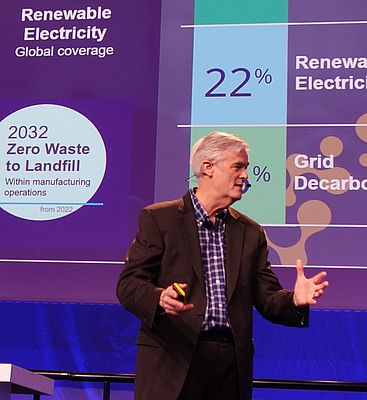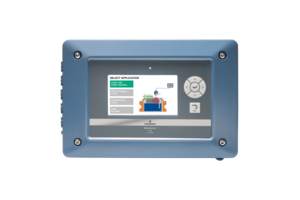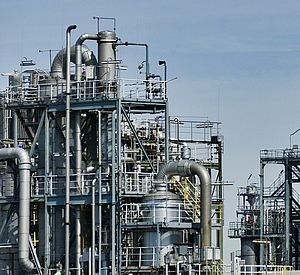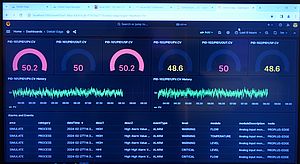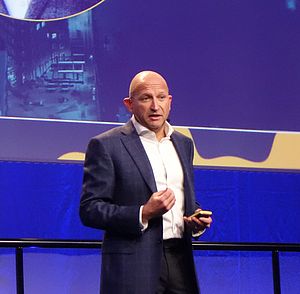As you know, even the longest journey starts with the first step. A position we are hopefully not in if it comes down to the sustainability journey. But even if you started it as an early adopter and have already started to harvest the so called low hanging fruits, the easy ways of gaining positive effects in your company there is still a long way to go.
At the Emerson Exchange in Düsseldorf Mike Train and Peter Zornio reported about different aspects of the Emerson Environmental Sustainability Framework for a for a successful future.
Greening of
The goals Emerson has set for themselves are quite ambitious, but the company is on a good way to fulfil them. In 2030 Net Zero Operations should be reached in scope one and 2 and scope 3 should be reduced by 25%. By 2045 the goal is to reach Net Zero for the whole value chain. Another goal on the way to circularity is to reach Zero Waste to Landfill rate for the Emerson manufacturing operations by 2032.
Compared with the base year of 2018 the goals reported for the year 2022 show a reduction of emission intensity by 42% (MTCO₂/SM), -19% energy intensity(MWh/SM) and 30 % more use of renewable energies on a global level.
Mile Train states that for reaching these goals the right culture has to be achieved in a company, because they are hard to reach and to be successful everybody in the operations plays an important role.
As an example, he cites the more than 50 treasure hunts at Emerson facilities that engage employees, sharpen their awareness of potential, and build on their creativity and enthusiasm.
Greening with
Because the problems to be solved are complex, Emerson relies on collaboration and partnerships, fostering important dialogues with academia, research, policymakers, and other industry influencers to drive programs to achieve sustainability goals. Extensive collaboration is required, both internally and externally. Various events are held with suppliers and customers to identify opportunities to reduce environmental impact and share opportunities and best practices as we move towards decarbonisation.
Greening by
This part of the sustainability and decarbonisation strategy is the customers' journey and how to achieve their goals for a sustainable, economically and environmentally viable future.
The 4 pillars of the strategy are:
Energy Source Decarbonisation through the adoption of low carbon electricity and fuels, including wind, solar, biomass, LNG, biofuels and hydrogen. Emissions & Energy Management to help transform traditional industries to reduce energy consumption while predicting and preventing emissions with advanced monitoring, control, analytics and simulation. Electrification and Grid Systems provides smart grid management systems, building large-scale battery storage and maximising the use of minerals for battery technologies. The final pillar, Circularity and Waste Management, focuses on maximising the lifecycle value of products, using water more responsibly, extending the life of plastics, batteries and other materials, and creating new molecular sources for products.
Maximum agility and data availability
Achieving all of these ambitious goals requires a modernisation of the automation architecture that liberates siloed data and helps to overcome the limitations that organisations face in their digital transformation programmes, which have so far failed to deliver the expected results because of all the data that is not integrated or contextualised.
This is where the vision of Boundless Automation can help, as it liberates data and helps with analysis and optimisation through artificial intelligence. The scope is shifting from hardware and device-centric automation to a software-centric view and an enterprise-wide software platform that covers multiple sites as needed and accesses data depending on the use case in the cloud and at the edge. But when you break down the perimeters that were built into the old architecture for security reasons, you have to find something new to protect your data and your expertise. In this kind of environment, it will be a zero-trust approach, where information can only be exchanged with the authorisation of the communication partners.
Overall, the two experts painted a positive picture of the future. The challenges are great, but the portfolio of ways and technologies to solve the problems on an economic and societal level is there.
Or as Peter Zornio put it: "There has never been a better time to be an engineer!"


